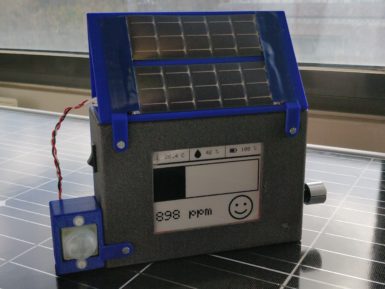
Grove Shield for Arduino Nano
Grove Shield for Arduino Nano provides you a simple way to connect with Arduino Nano.
This shield help you get rid of breadboard and jumper wires by pulling out the pins of the motherboard and expands to 8 Grove connectors.
Overview
This shield pulls out the pins of the motherboard and expands to 8 Grove connectors, including 3 Grove digital connectors, 3 Grove analog connectors, 1 Grove I2C connector, and 1 Grove UART connector.
With the help of the Grove system, you can connect hundreds of Grove sensors, Grove actuators and Grove displays to the Arduino Nano with a simple plug.
V1.1 Support List:
- Arduino Nano
- Arduino Nano Every
- Arduino Nano 33 IoT*
- Arduino Nano 33 BLE*
- Arduino Nano 33 BLE Sense*
*Attention:
To work with Arduino 33 serial boards, please switch the VCC power to 3.3V. If the VCC power supply is switched to 5V, the development board may be damaged!
Get Inspired

Just a simple and enjoyable autonomous greenhouse

Humans are animals and like all animals, we evolved in mostly outdoor conditions where the air is nice and fresh. But modern society keeps most of us indoors the vast majority of the time, which could have negative health effects. There are many potential hazards, including a lack of sunlight and psychological effects, but CO2 may pose a more tangible risk. To keep tabs on that risk within classrooms, a team from Polytech Sorbonne built this small CO2 monitor. This CO2 monitor performs two functions: it shows anyone nearby the CO2 levels in the area and it uploads that data over LoRaWAN to a central hub that can track the levels across many locations. A school could, for example, put one of these CO2 monitors in every classroom. An administrator could then see the CO2 levels in every room in real time, along with historical records. That would alert them to immediate dangers and to long term trends. At the heart of this CO2 monitor is an Arduino MKR WAN 1310 development board, which has built-in LoRa® connectivity. It uses a Seeed Studio Grove CO2, temperature, and humidity sensor to monitor local conditions. To keep power consumption to a minimum, the data displays on an e-ink screen and an Adafruit TPL5110 timer only wakes the device up every ten minutes for an update. Power comes from a lithium-ion battery pack, with a DFRobot solar charger topping up the juice. It uploads data through The Things Network to a PlatformIO web interface. An Edge Impulse machine learning model detects anomalies, so it can sound a warning even if nobody is watching. The enclosure is 3D-printable.







